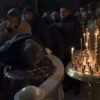
During the 1971 Liberation War, dozens of regional forces emerged across Bangladesh. Just as the freedom fighters trained under the sub-sectors and the Bengal Regiment fought valiantly, these regional forces also put up tough resistance against the Pakistan forces. In the month of victory, we bring you the stories of some of these heroic forces
During the 1971 Liberation War, dozens of regional forces emerged across Bangladesh. Just as the freedom fighters trained under the sub-sectors and the Bengal Regiment fought valiantly, these regional forces also put up tough resistance against the Pakistan forces. In the month of victory, we bring you the stories of some of these heroic forces.
During the Liberation War, a regional guerrilla force by the name of Rafiq Bahini rose to prominence in Bagerhat.
According to the books “Ekattorer Bagerhat Muktijuddher Ancholik Itihash” by Swarochish Sarker and “Chirulia Bishnupurer Muktijuddho” by Shahadat Hossain Bachchu, the force successfully kept 150 sq km of area, stretching across Bagerhat Sadar, Chitalmari, and Fakhirhat upazilas, free from enemy control throughout the war.
During the war, Rafiq Bahini fought in over 25 battles against Pakistani forces. These battles resulted in significant casualties among Pakistani soldiers and Razakars.
While Rafiq Bahini began with just 11 freedom fighters, it eventually expanded to include more than 500 members, according to the books.
FORMATION
Rafiqul Islam Khokon, then regional chief of a committee of the Purbo Bangla Communist Party, formed the force in Chirulia village, situated on the banks of the Bhairab river in Bishnupur union under the Sadar upazila.
In February this year, this correspondent visited Bagerhat Sadar, Chitalmari, and Fakhirhat upazila and spoke to several Rafiq Bahini freedom fighters.
According to them, a group of followers of the Purbo Bangla Communist Party, led by Rafiqul Islam was secretly mobilised in Bagerhat town and Bishnupur union, before March 1971. In addition to monitoring the overall situation in the country, the group members prepared for the possibility of war.
After the brutal massacre by Pakistani forces on March 25, all members of the group left Bagerhat town and relocated to Bishnupur.
Recent photo of Chirulia school ground where the Rafiq Bahini members trained. Photo: Ahmad Istiak
“>
Recent photo of Chirulia school ground where the Rafiq Bahini members trained. Photo: Ahmad Istiak
LONE REVOLVER
The force’s initial and sole weapon was a revolver obtained by freedom fighter Asadul Haque.
Speaking to this newspaper, Asadul said after Bangabandhu Sheikh Mujibur Rahman’s speech in March, locals looted gun stores in Khulna’s Boro Bazar. “I learned that an acquaintance had stolen a revolver. Later, I managed to trade my watch for that revolver.”
In addition to the revolver, Rafiq Bahini freedom fighters began gathering weapons through various means in late April.
On April 27, a group of freedom fighters led by Rafiqul Islam seized six rifles from police and Ansar members patrolling different parts of the town.
Moreover, following a raid at the armoury of Pirojpur Treasury led by local freedom fighter Fazlul Haque, the Rafiq Bahini was given 19 rifles from the looted firearms.
Ali Ahsan Khasru, a freedom fighter of Rafiq Bahini, said, “We also made improvised explosive devices called ‘pipe bombs’ to make up for the shortage of firearms.”
Rafiq Bahini was headquartered in Khalishpur village under Bishnupur union, with two additional bases at Santoshpur Primary School and Surigati village in Chitalmari upazila.
According to Rafiq Bahini members, the force’s second-in-command was Sheikh Anisur Rahman. He died on May 21, 2008. Subedar Tajul Islam, an accused in the Agartala Conspiracy Case, briefly served as the force’s chief instructor. He has also passed away but this correspondent could not confirm the date of his passing.
Recent photo of Bhairab river. In Chirulia village, on the banks of this river, the Rafiq Bahini was formed. Photo: Ahmad Istiak
“>
Recent photo of Bhairab river. In Chirulia village, on the banks of this river, the Rafiq Bahini was formed. Photo: Ahmad Istiak
FIRST OP
According to the book, “Chirulia Bishnupurer Muktijuddho”, Rafiq Bahini’s first operation was the attack on Bagerhat Sadar Police Station on April 30. Besides Rafiq Bahini, two other groups of freedom fighters led by Sohrab Hossain and Kamruzzaman Tuku took part in this operation.
They had two objectives: freeing arrested Awami League leader Syed Ajior Rahman from police custody and looting the treasury office next to the police station for weapons and cash.
On the night of April 30, the joint force attacked the police station and the treasury. However, they discovered that Ajior Rahman had been taken to jail from the police station earlier that day. Moreover, they could not break through the defences of the treasury office. A total of four people were killed in the battle—two policemen and two Tuku group freedom fighters.
KEY OP
One of the most important battles of the Rafiq Bahini against the Pakistani forces was the Battle of Madhavkathi.
On August 1, Pakistani soldiers brutally murdered two brothers of a freedom fighter from Bishnupur village and subsequently set the village ablaze.
In response, Rafiqul Islam initiated a large-scale campaign to mobilise resident youths for an attack on the local Pakistani camp.
Ismail Hossain, a freedom fighter of Rafiq Bahini, said, “On August 6, the military and Razakars took position at the Madhavkathi madrasa. The following night, at midnight, a force of 150 freedom fighters encircled the madrasa and launched an attack.
“The battle raged until noon on August 8. Eventually, the enemy forces, unable to withstand the assault, retreated via a launch and fled across the river.
“Three Pakistani soldiers and 16 Razakars were killed in the encounter.”
MAJOR SETBACK
At one stage of the war, the Rafiq Bahini found itself grappling with a shortage of arms. On top of that, the relentless attacks by the Pakistani forces left the freedom fighters feeling increasingly helpless.
To address this situation, Rafiq agreed to a proposal from the freedom fighter commander Manosh Ghosh to acquire weapons from India. They arranged for a plan to collect weapons near the Indian border. However, Rafiq was injured during a Pakistani attack on his way to the location.
In late August, Rafiq Bahini’s Santoshpur camp was destroyed in an attack by Pakistani forces. After his recovery, Rafiqul Islam returned to the force on August 30. Despite his injuries, he took on the task of reorganising the team.
FIGHT FOR SURVIVAL
According to the book, “Ekattorer Bagerhat Muktijuddher Ancholik Itihash”, in early September, Pakistani forces, determined to destroy the Bishnupur camp, began assembling in the Panighat area of Jatrapur union.
This marked the beginning of a conflict that would pose a formidable challenge to the survival of the Rafiq Bahini.
The Rafiq Bahini began preparing defensive positions by digging trenches on both sides of the Bhairab river.
Abdul Majid Sheikh, a member of the Rafiq Bahini, said, “When the Pakistani military reached Bishnupur on a large boat, a gunbattle ensued. We managed to sink the vessel. Many Pakistani soldiers and Razakars were killed.
“As the remaining soldiers advanced along the bank, they faced fierce resistance, forcing them to retreat. The Pakistani army later imposed a curfew on the area and recovered the bodies of 16 of their soldiers.”
Rafiq Bahini members said they killed three Pakistani soldiers and five Razakars in an encounter near Dopara Bridge in September. Freedom fighter Bijoy Pal was martyred.
In October, four Pakistani soldiers and three Razakars were killed in a battle at Baburhat Bazar.
In November, another battle at Baburhat resulted in the deaths of five Pakistani soldiers and many Razakars.
Rafiq Bahini freedom fighter Tafsir Uddin Sheikh said the Battle of Baburhat was the last major battle fought by Rafiq Bahini. “The Pakistani military suffered heavy losses in the battle.”
Translated and edited from Bangla by Subrata Roy.


 For all latest news, follow The Daily Star’s Google News channel.
For all latest news, follow The Daily Star’s Google News channel. 













